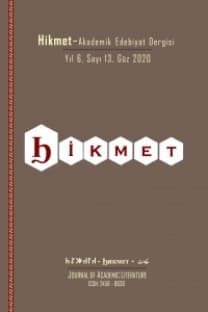OYUN VE ÜSTKURMACA BAĞLAMINDA BİR ANİMASYON OKUMA DENEMESİ: WRECK-IT RALPH
1930’lardan itibaren adı zaman zaman sanat ve felsefe çevrelerinde farklı bağlamlarda gündeme gelse de postmodernizm, François Lyotard ismiyle anılagelmiştir. Onun 1979 tarihli “Postmodern Durum” adlı eseri; bir bakıma bir realiteyi teorize etmiş; böylece postmodernizm, felsefe başta olmak üzere hemen bütün sosyal bilimlerle insan bilimlerinin en temel tartışma konusu hâline gelmiştir. Postmodern sanat, edebiyatın hemen bütün türleriyle sinemada da kendini gösterir. Esasen postmodernizm; pastiş, parodi, üstkurmaca, metinlerarasılık gibi postmodern öncesi anlatıda karşılaşılabilecek kimi anlatım tekniklerini ya da anlatı hususiyetlerini farklı bir düzleme oturtmak suretiyle kullanır ve karakterize eder. Bu farklı düzlem; postmodern kurmacanın en temel hususiyeti olan oyun ve belirsizliktir. Oyun ve belirsizlik, iki temel noktaya dikkat çeker. Öncelikle postmodern bilgi kuramına göre insan, varlığa dair kesin, nesnel ve tümel bir bilgi üretemez. Bu noktadan beslenen belirsizlik gerçek/gerçek olmayana dair şüpheci bir spekülasyonu beraberinde getirir. Kurmaca ile gerçek arasında çağlar boyu varlığı mutlak görülen sınır; kısaca değinilen bu düşünceler etrafında aşındırılır. Buna ek olarak nesnel bilginin inşasının imkânsızlığından beslenen “amaç” yitimi; var oluşun anlamsız ve amaçsız bir oyun olduğu düşüncesini de beraberinde getirmiştir. Şu hâlde bizzat kendisi bir oyun olan hayatı yansılayan kurmaca da bir oyun olacaktır. Böylece oyuna dönüşen ve “-mış gibi yapma” hususiyetini yitiren sanat eseri, kurmaca/gerçek çatışmasını oyun teması ve bu temaya dönük anlatım teknikleriyle destekleyerek işler. Postmodern kurmacanın yukarıda bahsi geçen hususiyetlerini animasyon sinemasının kimi eserlerinde görmek mümkündür. Bu bakımdan Rich Moore’un yönettiği “Wreck-It Ralph” isimli animasyon dikkat çekicidir. Bilgisayar oyunlarının oynandığı bir oyun salonunu ve buradaki oyunların kahramanlarını merkeze alan film; gerek çift katmanlı anlatı yapısıyla gerek oyunu bir anlatım tekniği hâline getirmesiyle postmodern kurmacanın en temel hususiyetlerini taşır. Öte yandan bahsi geçen çift katmanlı anlatımın çocuk eğitimi açısından taşıdığı hususiyetler de önem arz etmektedir. Animasyon filmlerde yaygın bir görünüm arz eden tek merkezli anlatı yerine ele alınan animasyonda karşılaşılan iki farklı gerçeklik zemini ve dolayısıyla birbirine paralel olarak ilerleyen iki merkezli anlatı; eserin alımlanması ve anlamlandırılması sürecinde kendine has bir işlev üstlenir. Bu çalışma, bahsi geçen animasyon filmde postmodern anlatının nasıl teşekkül ettiğini tespit etmeyi amaç edinir. Anahtar Kelimler: Postmodernizm, animasyon, kurmaca, üstkurmaca, oyunPostmodernism has happened to be remembered with François Lyotard though from time to time it is at the agenda of the art and philosophy circles in different contexts beginning from 1930s. His work “Postmodern Condition” (1979), in a sense, theorized a reality thus postmodernism has become the basic matter of debate of human sciences with almost all social sciences, particularly philosophy. Postmodern art shows itself in cinema as in almost all other kinds of literature. In fact, postmodernism takes and characterizes some kinds of narration styles or narrative features that are probable to witness in the pre-postmodern narrations such as pastiche, parody, metafiction and intertextuality in a different context. This different context is game and obscurity which are the main features of the postmodern fiction. Game and obscurity takes attention to two main points. Firstly, in postmodern epistemology, human being cannot create a certain, objective and universal knowledge. The obscurity arising from this point brings a skeptic speculation on real/unreal. The so-called absolute border down the ages between reality and fiction is damaged because of these thoughts mentioned in short. In addition to this, the loss of “purpose” fed by the impossibility of the objective knowledge has brought along the thought that the existence is a meaningless and aimless game. So, the fiction redoubling the life -already a game itself- is a game. Thus, the piece of art turning into a game and losing the characteristic of “pretending” mentions the conflict of fiction/reality with the theme of game and narrative styles corresponding to this theme. It is possible to see the characteristics of the postmodern fiction mentioned above in some works of the animation cinema. In this aspect “Wreck-it Ralph” directed by Rich Moore is remarkable. Turning around a video game hall and the heroes there it carries the basic characteristics of postmodern fiction by both with its bilayer narrative structure and turning the game into narration style. On the other side, the bilayer narration mentioned is also significant from the pedagogic aspects of the childhood education. Instead of mono-center narrative commonly seen in animation movies, two different reality areas and therefore two-centered narrative serves a specific function in the process of the reception and interpretation of the work. This study aims to identify the formative process of the postmodern narrative in the aforementioned animation movie. Key words: Postmodernism, animation, fiction, metafiction, game
Anahtar Kelimeler:
Postmodernizm, animasyon, kurmaca, üstkurmaca, oyun
___
- AKTAY, Y. (2008). Kavramsal Açıdan Modernizm ve Postmodernizme Bakmak. Hece Modernizmden Postmodernizme Özel Sayısı,138/139/140, 8-16
- AYDIN, M. (2008). Postmodernizm ve Eleştirisi. Hece Modernizmden Postmodernizme Özel Sayısı, 138/139/140, 34-46
- http://www.imdb.com/title/tt1772341/
- ÖZKUL, M. M. (2008). Post-modern Dönemde Roman ve Nitelikleri. Hece Modernizmden Postmodernizme Özel Sayısı, 138/139/140, 322-332
- RICH, M. (2012). Wreck-It Ralph. U.S.: Walt Disney Animation Studios
- ÜNAL, H. (2008). Postmodern Stratejiler ve Yöntem Sorunu Üzerine. Hece Modernizmden Postmodernizme Özel Sayısı, 138/139/140, 286-296
- ISSN: 2458-8636
- Yayın Aralığı: Yılda 2 Sayı
- Başlangıç: 2015
- Yayıncı: Ahmet TANYILDIZ
Sayıdaki Diğer Makaleler
OYUN VE ÜSTKURMACA BAĞLAMINDA BİR ANİMASYON OKUMA DENEMESİ: WRECK-IT RALPH
METİNLERARASI İLİŞKİLERİN KLASİK RETORİKTEKİ KÖKENİ ÜZERİNE BİR ARAŞTIRMA
“KUŞLAR YASINA GİDER’’ ROMANINDA POSTMODERNİZMLE GELENEĞİN BULUŞMASI
POSTMODERN EDEBİYATIN “NE”LİĞİ
MUSTAFA KARABULUT, İbrahim BİRİCİK
KURAL TANIMAYAN BİR İDEOLOJİ: POSTMODERNİZM
DAĞLARCA’NIN HÜSN Ü AŞK YORUMU: ŞEYH GALİB’E ÇİÇEKLER
MUKAYESELİ EDEBİYAT VE POSTMODERNİZM BAĞLAMINDA KIRMIZI SAÇLI KADIN ÜZERİNE BİR İNCELEME
İNŞÂNIN POSTMODERN TERENNÜMÜ II: YEDİNCİ GÜN’DE OSMANLI TÜRKÇESİ KULLANIMINA DAİR
BİR MESNEVİ PARODİSİ OLARAK BENİM ADIM KIRMIZI
POSTMODERN YÖNTEM ARAYIŞLARI BAĞLAMINDA ÖZNE-BİLGİ İLİŞKİSİNE BİR GİRİŞ DENEMESİ
